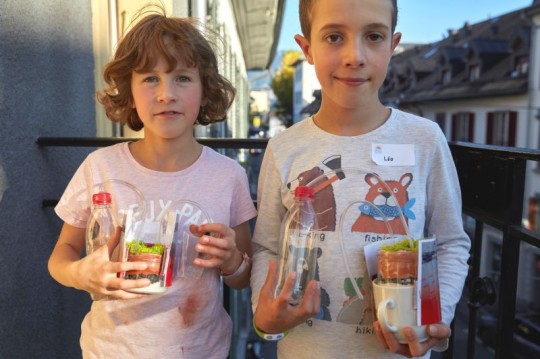 Geothermal model
Geothermal model

This project illustrates in a simplified way the drilling techniques used in deep geothermal energy.
Geothermal energy concerns the heat (thermal) found in the earth's subsoil (geo). This energy comes mainly from the earth's core, whose heat is considered, on a human scale, as an almost infinite resource. It is so considered as renewable and low-polluting energy.
Geothermal energy has been exploited since ancient times thanks to the hot springs that naturally reach the earth's surface. Today, in addition to heat pumps (20-300 meters deep), we are trying to take even better advantage of this energy by digging at very great depths to reach areas where the temperature often exceeds 100°C!
In a deep geothermal drilling (3-5 km), heat is recovered by injecting cold water underground. This water will warm up when it comes into contact with the heat of the subsoil and then rise to the surface through a second pipe. The heat from the borehole water is then transferred to another water network to heat buildings or produce electricity. Once cooled, the borehole water is returned to the ground and the process can start again.
| Date | 14.07.2022 |
| Author | Martin |
| Organization | webenergie |
| Translator | webmaster |
| Final purpose | Produce light or heat |
| Field | Energy Substainable development |
| Language | français english |
| Licence |  |


